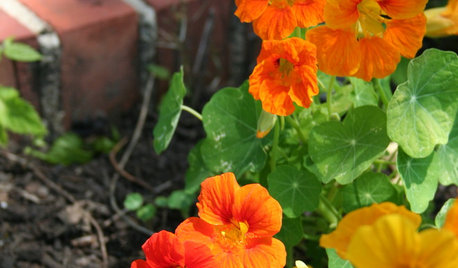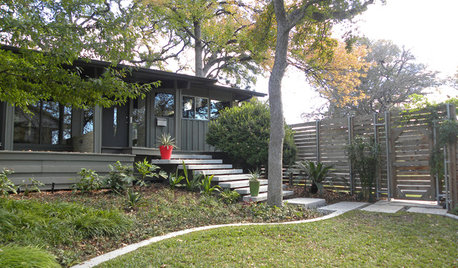Tomato bottom rot!
lovetotweet
14 years ago
Related Stories

EDIBLE GARDENSSummer Crops: How to Grow Tomatoes
Plant tomato seedlings in spring for one of the best tastes of summer, fresh from your backyard
Full Story
FEEL-GOOD HOME21 Ways to Waste Less at Home
Whether it's herbs rotting in the fridge or clothes that never get worn, most of us waste too much. Here are ways to make a change
Full Story
FARM YOUR YARDHouzz Call: Home Farmers, Show Us Your Edible Gardens
We want to see where your tomatoes, summer squashes and beautiful berries are growing this summer
Full Story
TILETop Tile Trends From the Coverings 2013 Show — the Wood Look
Get the beauty of wood while waving off potential splinters, rotting and long searches, thanks to eye-fooling ceramic and porcelain tiles
Full Story
FARM YOUR YARDHow to Build a Raised Bed for Your Veggies and Plants
Whether you’re farming your parking strip or beautifying your backyard, a planting box you make yourself can come in mighty handy
Full Story
GARDENING AND LANDSCAPINGBuild a Raised Bed to Elevate Your Garden
A bounty of homegrown vegetables is easier than you think with a DIY raised garden bed to house just the right mix of soils
Full Story
GARDENING GUIDESEssential Watering Tips for Your Edible Garden
To give your edible plants just what they need, check out these guidelines for how, when and how much to water
Full Story
SPRING GARDENINGInspiring Raised Beds for Fall and Spring Planting
Make Your Next Vegetable Garden Even Better with Beautiful Boxes and Paths
Full Story
GARDENING GUIDESDon’t Let These Excuses Keep You From Gardening
Stop blaming your lack of experience, space, time and funds, and get on with the joy of garden making
Full Story
HOUZZ TOURSMy Houzz: A 'Home of the Future' Finds Present Perfection
Rescued from the brink of destruction, a 1965 home gets a complete, thoughtful overhaul from a Dallas couple
Full Story






elkwc
soonergrandmom
Related Professionals
Addison Landscape Contractors · Amesbury Landscape Contractors · Doctor Phillips Landscape Contractors · Eagle Landscape Contractors · Fruit Heights Landscape Contractors · Haverhill Landscape Contractors · Lynchburg Landscape Contractors · Ramsey Landscape Contractors · Casselberry Landscape Contractors · Clermont Decks, Patios & Outdoor Enclosures · Glasgow Decks, Patios & Outdoor Enclosures · Greeley Decks, Patios & Outdoor Enclosures · Randallstown Decks, Patios & Outdoor Enclosures · Riverside Decks, Patios & Outdoor Enclosures · Verona Decks, Patios & Outdoor EnclosuresOkiedawn OK Zone 7
lovetotweetOriginal Author
sammy zone 7 Tulsa
Okiedawn OK Zone 7
susanlynne48
susanlynne48